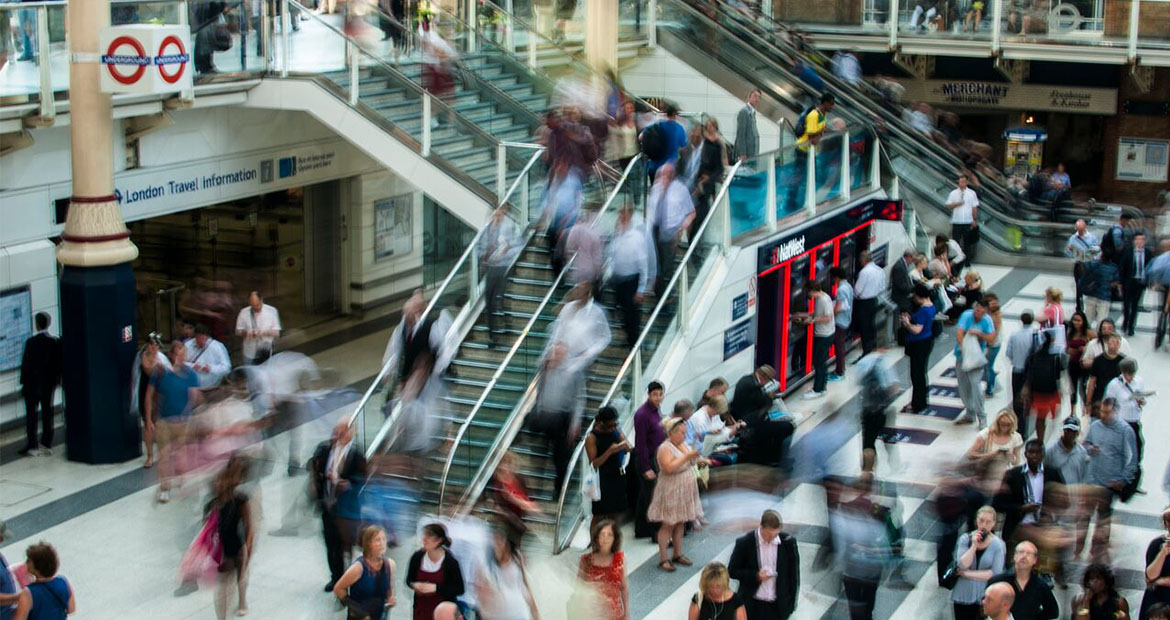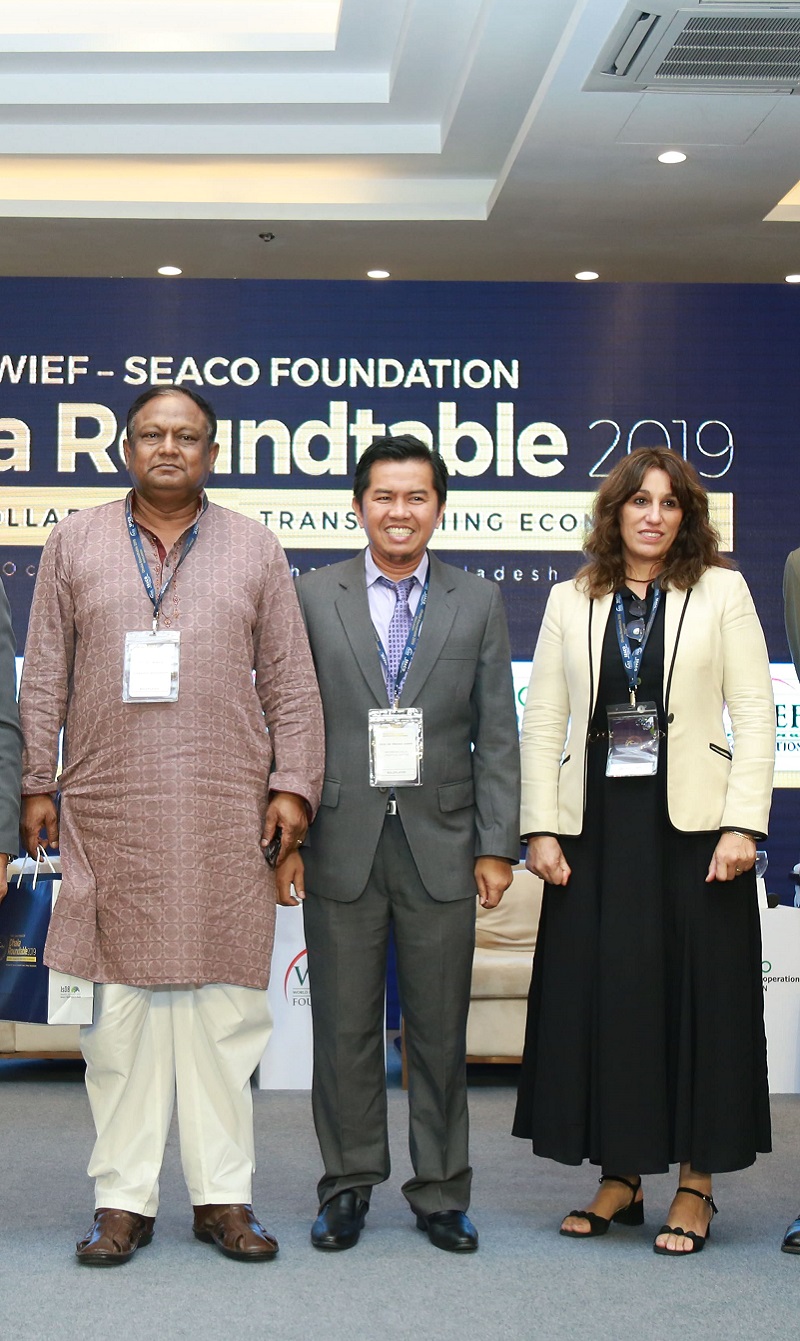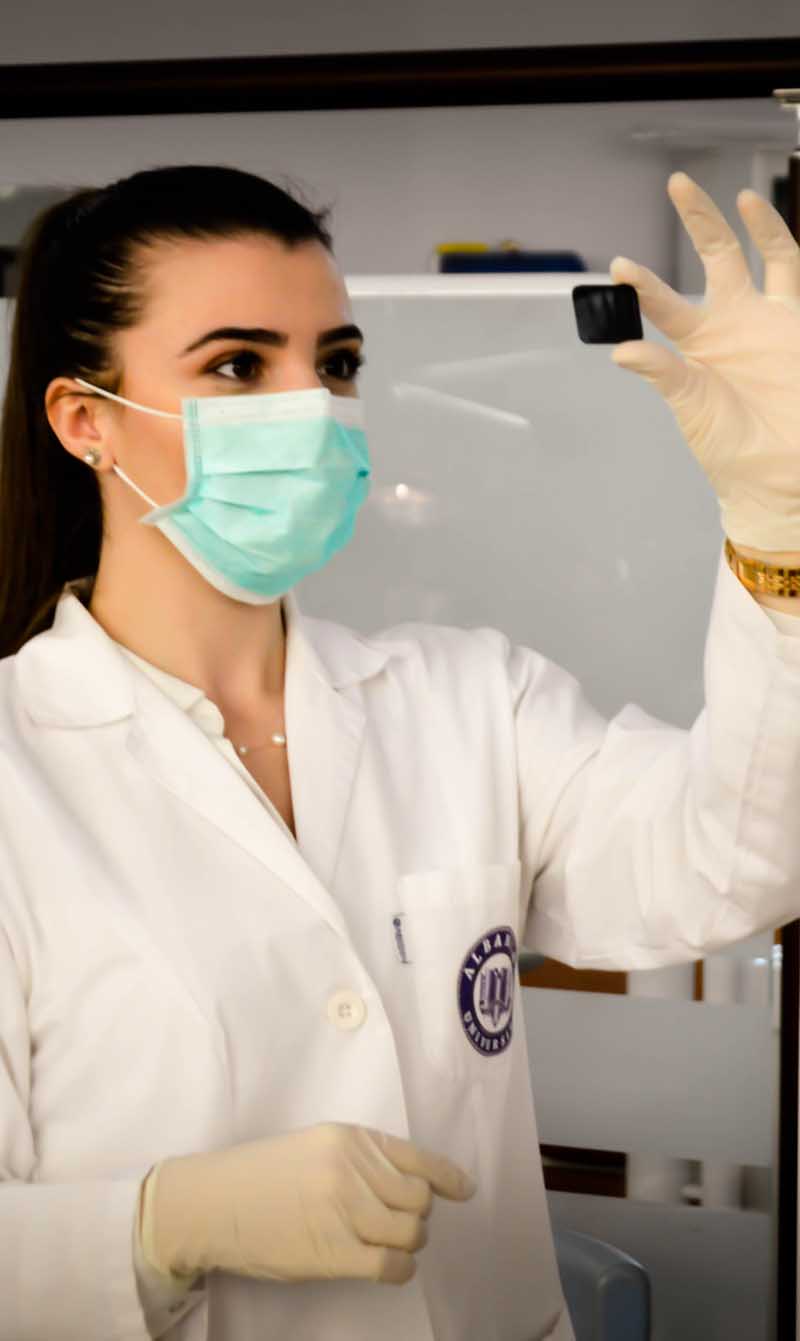Human smart cities
As the world moves towards smarter city solutions, there are some who consider halal to be part of its development. That and human smart cities concept entails more than just a smart city idea.
As the world’s urban population doubles in the coming decades, countries have a new mission to re-engineer the cities developed in the 20th century and build the new ones of the 21st. “Smart cities” are places where new digital technologies are being used to address chronic urban problems.
Gaining ground: Promoting ‘human smart cities’ solutions
Session moderator Takuma Hatano, President and CEO of the Japan Overseas Infrastructure Investment Corporation for Transport and Urban Development, said that some of these problems included congestion, slum areas, air pollution and deterioration of municipal functions. Hatano believed that the humane solution was to create sustainable societies where people would feel happy and comfortable and coexist harmoniously with the environment.
Cities of the 21st century faced complex problems, said the late Atsutoshi Nishida, Former President and Chairman of Toshiba Corporation, Japan, in his keynote address. He described the challenge as a trilemma of three critical issues: achieving sustainable economic growth, preserving the environment and securing resources.
‘All three issues must be tackled simultaneously by our continuous creation of new innovations,’ he said, ‘one of which is the development of human smart cities where people live and work comfortably and safely, with the best use of advanced technology and systems. In other words, it is a human-oriented city that features high-quality medical and educational systems, provides more employment opportunities and is energy efficient.’
One of the major factors that have spurred the development of human smart cities is the impact of climate change, leading to an increase in natural disasters such as typhoons and floods. ‘In responding to these weather-related disasters, there are several approaches: mitigation by reducing greenhouse gases, and adaptation by understanding the anticipated impact, investing resources in dealing with it in advance and raising awareness of the importance of disaster prevention,’ said Nishida.
Human smart cities fall under the approach of adaptation, especially with the adoption of a smart, frugal perspective to get the maximum outcome from limited resources. ‘In constructing a frugal human smart city, the development of smart and sustainable infrastructure supported by ICT and sensor technologies is absolutely essential,’ he added.
‘From the perspective of halal, [factors such as] health, cleanliness, safety and high quality are all to be respected. I think that these values have a close affinity with the vision of human smart cities.
Nishida believed that even though the Muslim economic zone—extending from Asia to the Middle East and as far as Africa—was not a uniform environment, all the countries shared the common need for smart, frugal, compact cities that were equipped with energy management systems, energy-saving facilities, high quality water and sewerage systems, efficient urban transport systems, supported by the best energy mix.
He touched on measures that would improve the value of the city and increase its productivity, including a smart energy grid, smart meters for water, sewage and gas, disaster prevention systems, and transit-oriented urban transport. Other crucial services in a human smart community included healthcare and education, which could be enhanced through the introduction of ICT.
Nishida looked forward to a partnership between WIEF and Japan to develop human smart cities in the Islamic economic zone. ‘From the perspective of halal, [factors such as] health, cleanliness, safety and high quality are all to be respected. I think that these values have a close affinity with the vision of human smart cities. The realisation of human smart cities in the Islamic economic zone will not only benefit the area, I believe it will also contribute to the world’s long-term development in the 21st century,’ Nishida concluded.
Several Japanese companies, which are leading global names in technology, are at the forefront of smart city solutions. Among them are NEC Corporation and Mitsubishi. Hideichi Okada, Senior Executive Vice President of NEC Corporation, presented NEC’s innovations for safer cities and better public services: ‘NEC has been working on many projects in various areas to realise safer cities around the world. In some cases, we provided solutions to support the infrastructure, including airports and railways,’ he said.
‘In others, we provided solutions to law enforcement, utilising biometrics authentication technologies such as fingerprint identification and face recognition,’ he added. One example of NEC’s law enforcement solutions is in Tigre, Argentina, where the company has built an integrated centre for urban safety that enables different state agencies, such as the police, fire department, civil defence and medical emergency personnel, to better coordinate their efforts in safety and security.
‘With our big data analysis engines and sensor technologies, I believe that NEC will be able to contribute to the optimisation of city operations,’ Okada said, adding that NEC has provided video analysis solutions for detecting behaviours and movement of people, vehicles and others, as well as data analysis to improve the efficiency of urban waste collection.
‘Through collaboration with the Islamic community, NEC would like to contribute to the sustainable development of the world, especially in the fields of safety, security and optimisation of city operations,’ Okada said. Mitsubishi Chemical Holdings Corporation has also taken on the challenge of developing solutions to urban problems with its expertise in chemical technology. The company’s Managing Executive Officer and Deputy Chief Technology Officer, Dr Hisao Urata, focused on Mitsubishi Chemical’s development of organic photovoltaics (OPV), which is one of the company’s next-generation growth businesses.
‘Solar or photovoltaic cells provide sustainable energy because they can change solar energy to electricity efficiently. A solar cell is a form of low-carbon technology and is thus an environmentally-benign energy-generation system that is sustainable for smart cities,’ Dr Urata explained. ‘At Mitsubishi Chemical, we have developed a variety of photovoltaic modules using silico-based solar cells on metal, waterproof plastic sheeting, transparent glass and an aluminium-polymer composite substrate,’ he said, highlighting that the modules were flexible, lightweight and design-friendly.
Dr Urata emphasised the role of OPVs in the generation auxiliary power, which could contribute to a micro-grid for a better energy mix. ‘The concept of local electricity generation for local consumption is very important for society in the future, as it can lead to creating smart cities.’
He assured participants that Mitsubishi Chemical would look into improving the photoelectric conversion efficiency of the OPVs to contribute towards the planet’s renewable energy sources. The final speaker of the session, Frans Anton Vermast, discussed how an actual smart city was developed, what approaches were taken and what were the lessons learnt. Vermast is the Senior Strategy Advisor, City of Amsterdam, the Netherlands.
‘Amsterdam Smart City is the innovation platform of the Amsterdam metropolitan area, which challenges companies, residents, the municipality, and knowledge institutions to develop and realise smart solutions for today’s urban challenges,’ he said. While Amsterdam has only 800,000 inhabitants, its population is composed of 180 different nationalities, which means that the one-size-fits-all approach does not work in the city. ‘Using the bottom-up approach, we have to see what works for people of different nationalities and different backgrounds,’ Vermast said.
He emphasised that residents’ happiness was the central pillar of smart cities: ‘How can you make the lives of your citizens happier, and how can you make your city more habitable, where it is pleasant to work, live and play? Smart is not the objective. It’s just a journey, it’s just a process.’
The collective approach was used in developing Amsterdam Smart City, founded on a public-private-people partnership. ‘You have to collaborate and combine the strengths of every partner you have in the city or in other cities. The people are really important, because if your end-user doesn’t take the solution, or is not willing to use your product or service, then your product or service will fail,’ Vermast said. In line with the theme of promoting ethical principles, Vermast noted that the City of Amsterdam invested in projects that provided a return on investment for the community.
‘The condition for a smart city is open data. The City of Amsterdam threw all its government data on the street, put it in different datasets and made it available for everybody—people, organisations and companies. From this, they were able to establish a lot of innovative applications and services for citizens, or for small and medium enterprises,’ Vermast explained. Services targeted in the Amsterdam Smart City platform included mobility of residents, dynamic traffic control systems, crowd control within the city, electric vehicles, as well as a smart grid for locally-generated and locally-stored energy.
Vermast said that they learnt three important lessons from their experience developing Amsterdam Smart City: sometimes the technology alone might not be feasible, the projects might not be financially feasible, and projects might not all be scalable and sustainable. ‘The city is an open platform where companies, people, developers, knowledge institutions and NGOs can come and discuss things. The products and services must also be user-centric,’ Vermast concluded.
Q&A
What role did political will play in the development of the Amsterdam Smart City?
Frans Anton Vermast: Political leadership was necessary to set the priorities from the beginning. In 2008, when the financial crisis occurred, we saw a lot of financial resources drying up. And from that point on, we became much more innovative in our ways of investing in the city.
Community-based initiatives became a priority as well because you can’t centralise all the issues. Basically you need political leadership—the people who have the vision—but in the end it should be the bottom-up approach: collaborative action from citizens, small or medium enterprises, big companies, knowledge institutions and NGOs.
Should the people’s opinions be given priority in the development of the city?
Vermast: Yes, the project has to be user-centric or it will not be successful. One of the approaches we took to develop the structure vision—how would we like to see the city in 2040—was to interview about 8,000 people from all kinds of different groups: big companies, small companies, rich people, poor people—all types of people—to ask them how they would like to see their city in 2040.
Also, if we have to redevelop a certain area within the city, it’s not the people in the offices of the civic hall anymore who decide what’s going to happen. Now, in that area, we just put four Portakabins with a civil servant, and it’s open to the public, all of whom have different priorities. They can go there to complain or to add their ideas, and from then on you save a lot of time especially in legal procedures afterwards. This is one of the benefits of empowering the people.
What are your suggestions for us to try to achieve the concept and vision of human smart cities?
Hideichi Okada: I’m very pleased Mr Nishida mentioned “human smart city” rather than “smart city”. And also I’m very happy to hear Mr Vermast say that the ultimate goal of building the smart city is happiness.
We have lots of companies and people who can offer a lot of state-of-the-art technologies. But I’d like to touch upon another point, that is, the participation of the people. All that will lead to the happiness of the people living in the smart city. All that will make the smart city a human smart city.
What would you expect the Abe Cabinet to do to share Japan’s experience in human smart cities?
Atsutoshi Nishida: I do not want to be deeply involved in political issues. But in Japanese cities, when it comes to human smart community or city projects, the progress of these projects is very slow. From the viewpoint of business or economics, it will take more time for those projects to be implemented in different kinds of cities. But what I would like to stress is that the construction or creation of human smart communities, or human smart cities, is directly related to the attitude or stance of a democratic local government. Those who benefit most should participate in local governmental issues. Then they will understand how important their taxes will be, and they will more actively and positively participate in local politics.
Human smart cities should be the result of partnership between businesses and government. But in reality, there is always opposition and resistance between the two. How do you think innovation could mitigate that kind of risk?
Hisao Urata: I think innovation should be for the people. And that’s why we always have to think about what we need, or what we want, and what we are thinking about for society.
Is there a starting point for a country to develop a smart city? For instance, in Dhaka, Bangladesh, all the basic necessities and facilities are lacking.
Vermast: One of the starting points is to describe the anatomy of your city and compare that to the anatomy of other cities, and then see what other cities’ solutions are because it’s not a one-size-fits-all solution. The starting point, in our opinion, would be to ask a lot of people and different stakeholders what their needs are; and from that point on, to establish a smart city strategy and vision. Start with interviewing and identifying what the needs and the wishes are from the several stakeholders. Don’t try to do this all with a top-down approach, but try to do this with a bottom-up approach.





